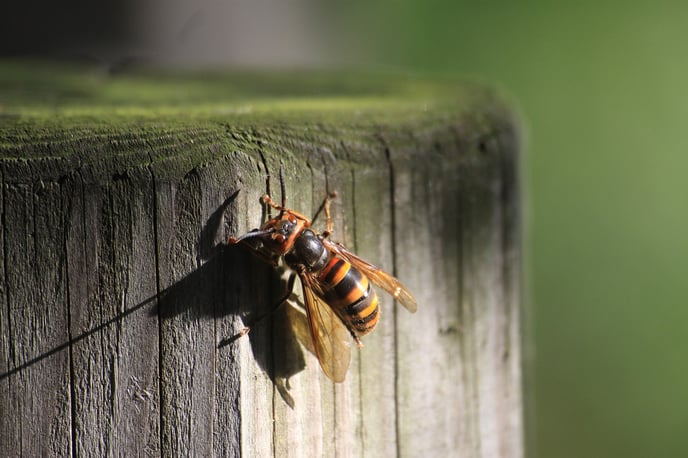
- Common name : Wood Wasp
- Scientific name : Various names (according to subspecies)
- Identification :
|
Characteristics |
Specifications |
|
Size (Adults) |
12-40mm, females much longer than males |
|
Body shape |
Abdominal base joined broadly to the thorax |
|
General body colour |
Brownish-black with paler markings |
|
Features |
Does not bite or sting |
|
Wings |
Varies in colour (transparent to dark) |
|
Others |
Larvae are cylindrical with very short legs and bent-up tail (colour ranges from whitish to creamy yellow) |
- Habits :
- Does not cause structural damage unless infested wood is used in a structure
- Adult wasps are noisy fliers and look intimidating
- Will chew through any finished surface in order to get at the infested wood
- Damaged items include: plaster walls, linoleum, non-ceramic floor tiles, hardwood floors, paneling etc
- Control
- Inspection
- Infested wood usually contain ‘exit holes’ about 4-6mm in diameter, usually surfaces within three years of using the wood in construction
- Grayish halos are present on the infested wood
- Action
- Infested wood usually contain ‘exit holes’ about 4-6mm in diameter, usually surfaces within three years of using the wood in construction
- Grayish halos are present on the infested wood
- Prevention
- Use only kiln-dried wood in the structure
- Refrain from using firewood (preferred medium of wood wasps for reproducing)
- Glossary
- Intimidating – Scary
- Halo – A circular band of colour
ORIGIN Exterminators is the first pest management company in the world to be awarded ISO 14001 EMS certification
